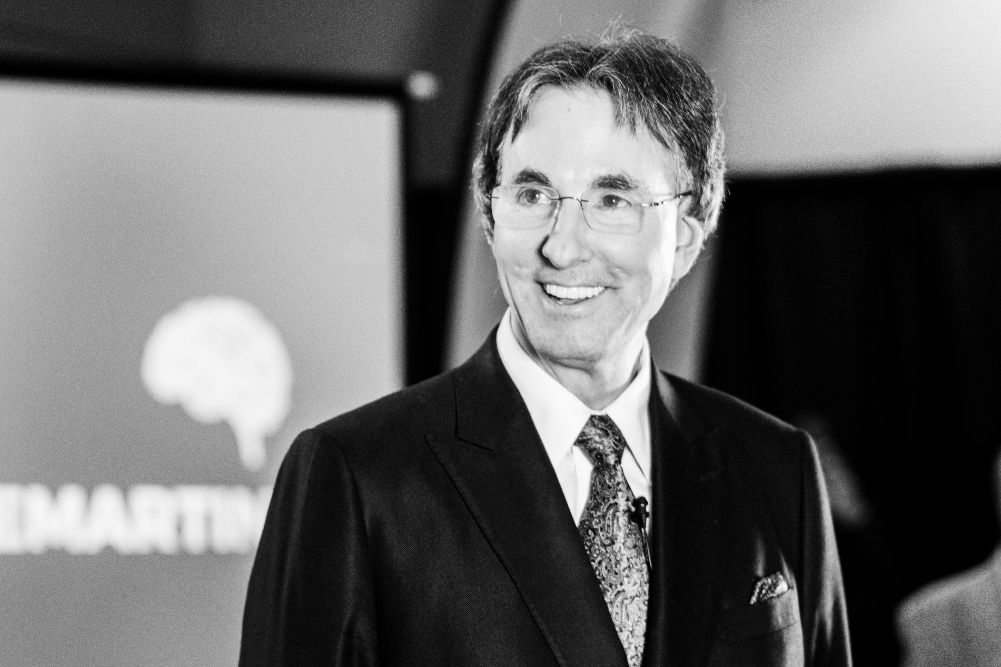Singer Ben Lee’s musical awakening
If you were a teenager in the ‘90s, you’ll remember Ben Lee. A precocious, gangly, whirlwind of a kid from Sydney’s eastern suburbs, Lee sang with an earnestness and vigour that went against the grain of a hiply ironic music industry and endeared him to fans. His indie-pop tracks made scrunchie-wearing teens want to sing out loud to their Walkmans and embrace life with gusto.
Scoot forward 20 years, encompassing nine albums, four Australian Recording Industry Association (ARIA) awards and two Australasian Performing Right Association (APRA) awards. Lee, now 34, has grown a beard and developed a bit more gravitas but he still has that self-belief, enthusiasm and prodigious talent, qualities he’s used to explore both the musical spectrum and his inner, spiritual self.
“I always had that thing — nowadays the kids call it swagger — where I would jump and then think about how I felt about it,” reflects Lee, sitting across from me in a sun-drenched Sydney room. “I would never not do something because I was scared.
“I try to process things a little more [now]. But when you’re trying to do something radical with your life, you have to do something radical.”
He has certainly been doing radical things in the past decade. In a journey reminiscent of ‘60s rock musicians like George Harrison and Cat Stevens, he has been exploring Hindu mysticism, dream analysis and, most recently, ayahuasca, the traditional Amazonian psychoactive “medicine”.
Now based in Los Angeles and married with two daughters, Lee doesn’t seem like the type to experiment with hallucinogenic drugs. Yet it’s just his latest foray down a progressively spiritual path.
Planting the seeds
As a child growing up in a conservative, middle-class Jewish family, there was an early indicator of Lee’s propensity for penning tunes about altered states of consciousness.
“I had a Jack and the Beanstalk pantomime record and I knew the songs back to front,” he recalls. “Once when I was in kindergarten, the teacher had an emergency and had to go out of the room and left me in charge, to sing the record. I was three or four years old, just sitting there, doing all the voices, all the characters, all the songs … I was obsessed!
“Someone gave me an esoteric reading of [Jack and the Beanstalk] recently. The giants are spiritual giants and the child has to choose between his mother’s desires and the desire to go into the world of the spiritual giants.
“It’s really a story about conflict in between worlds, and do you stay with the family or do you go and explore something fantastical but true? Which has been a theme all of my life.”
Lee would sit and play his parents’ records over and over and was obsessed with the radio. It took some prodding from his grandmother, who “did the whole Jewish mother thing” and pressured him into piano lessons, for the youngster to realise he could make his own music.
And make it he did, starting his first band, Noise Addict, with five friends in 1992 at the age of 13, the day after seeing Nirvana perform at Sydney’s Big Day Out music festival.
The group had a raw, experimental sound that grew out of the thriving Sydney punk scene of the early 1990s. After producing a four-track demo in Lee’s bedroom, Noise Addict was discovered by independent Australian label Fellaheen Records, released several EPs and was signed in the US by Grand Royal Records, producers behind alternative bands Beastie Boys and Sonic Youth.
It’s a fairly major thing to get this recognition at such a young age, I remark, but Lee just laughs. “I was delusional. I literally thought this music sounded amazing. It’s great … but it’s terrible. Even the people who liked it liked it because it was terrible, in a sloppy, do-it-yourself, punk kind of way.”
In 1995, while still in Noise Addict, 16-year-old Lee released his debut solo album Grandpaw Would and toured the US for the first time. His band released their only full-length album, Meet the Real You, that same year, then disbanded.
Its ambitious frontman struck out alone. In 1997, he released Something to Remember Me By with the hit song How to Survive a Broken Heart and, a year later, Breathing Tornados hit the shelves. The album was a huge hit in Australia, earning Lee ARIAs for Best Male Artist and Album of the Year. Its first single Cigarettes Will Kill You was nominated for another ARIA and finished second in ABC’s Triple J Hottest 100.
Riding on the back of his success at home (and potentially escaping some criticism he copped from music critics for calling his newest release the “greatest Australian album of all time”), Lee jetted off to New York in 1999. He’d released albums in the US but hadn’t yet had a song in the charts there and he was itching to explore further afield.
Enter the giants
In those early years of trying to crack the States, playing gigs and touring, Lee dated Hollywood actor Claire Danes, released his fourth album hey you. yes you., and simply let loose.
“It was exactly what being in your late teens/early 20s should be,” he says. “Running around, trying to go to fun parties, taking drugs, hanging out with models and actors … It was very much something that I felt curious about exploring. There is a vibrancy to New York; I liked the idea of being in the hub of all that activity and creative energy.”
And, like Jack scaling the beanstalk and leaving behind his familiar world, he started to encounter “spiritual giants”.
Lee, then 21, had heard about the Chinese energy practice of qi gong through a friend of a friend and started studying it at New York’s American Taoist Healing Center. He recognises his three years of practice as an important step to discovering the invisible world.
“Master Lu really opened me up to [the idea there’s] this real energy out there, and we’re not seeing it. You think you’re making all these decisions, but it’s these pathways of energy that are making them.”
It was through Lu that he met Hindu spiritually enlightened master Sakthi Narayani Amma, known simply as Amma, in 2003. At the time, Lee was a little down. His father had recently died, he had been dropped by label Grand Royal due to financial difficulties, his long-term relationship with Danes had ended and he was in a creative rut. So he ventured to Tamil Nadu, India, to meet the man who embodies mother love and is revered as the avatar, or divine incarnation, of Goddess Narayani.
The encounter left an indelible impression on Lee and marks the most significant turning point in his early career. “I came into meeting Amma with a lot of material goals. I still wanted to be really famous. Amma … actually helped me get [fame] and learn from it,” says Lee, who has since visited his guru multiple times.
“Amma said to me one day, ‘So what is Ben’s service going to be?’ I was crying because, oh, my career was in a bit of a slump and I couldn’t get in a groove, and Amma laughed and he said, ‘Music. Ben’s service will be music.’
“Then Amma looked out the window and said, ‘Has Ben Lee ever been top 10?’ and I said, ‘No, Amma. I’m not that successful.’ And Amma said, ‘Amma will bless Ben to be top 10 if Ben puts Amma’s message into music.’”
What was that message? Joy.
Lee returned to New York, started his own record label, Ten Fingers, and commenced work on his new album. From Amma’s message, he wrote his fifth album, Awake Is the New Sleep, released in 2005. In Australia, the upbeat, pop-packed recording debuted at number seven, reached number five in the charts and went double platinum, sweeping four major ARIA awards in 2005 and two APRA awards in 2006. It entered the top 10 in the Netherlands and Spain and also made it big in the US, where the song Catch My Disease was picked up for several TV show and movie soundtracks.
The top 10 album he’d dreamed of had arrived, but fame’s a fickle beast. “I began to build a connection between intention and results, but I also assumed, ‘Oh, this means everything I do is going to be successful.’ Nothing has replicated it since then,” Lee laughs.
“But the point is that a great spiritual master … is doing ego surgery on us. They work with our intents and they work with our desires. So that whole journey was really about surrender.”
His next two albums — 2007’s Ripe and 2009’s The Rebirth of Venus — did moderately well but didn’t match his earlier heights.
A whole new world
Lee’s spiritual journey, and his musical transformation, continued. He kept visiting India, relocated to Los Angeles and met actress Ione Skye, whom he married in 2008 in a Hindu ceremony presided over by Amma.
Ever curious, he also started to investigate dreams. “I’ve always had vivid dreams and worked with them and remembered them. And then my brother-in-law started working with this dream analyst and it sounded amazing, so I jumped in, as always.”
Three years into his treatment, in 2010, his therapist died from a stroke. He bundled up his examinations, as well as dream recollections from his family and friends, into his first concept album, Deeper Into Dream, released in 2011. Death is a theme of the album — “because death is a sort of dream, as life is” — but so is birth, thanks to the arrival of his daughter, Goldie, in 2009.
For a man who built his career on pop songs, creating more conceptual music was a trip into uncharted territory. In an interview following the release of Deeper Into Dream, Lee said, “You go through periods of your life where things make a lot of sense, and your career makes a lot of sense, and mine doesn’t right now.”
It was a time of uncertainty, but Lee embraced it with characteristic gusto. “I know people who can drink a lot and they don’t get drunk. They’re big guys; they’ve just got that build for it. I’ve got a build for this type of radical, transformative thinking. I can do it without a lot of complexity or neuroses,” he says.
“My wife was watching a show recently where there was an interview with Steve Jobs and Bill Gates. And the interviewer said to them, “If you imagine yourself losing everything, how do you feel?” They both had the same reaction — they lit up with excitement because they’d get to start again.
“It’s a different kind of adventurous thinking to people who like security and want to keep security. They’re the type of people who build things and break them, build them and break them. They’re interested in that process of cyclical rebirth and death.”
Lee, like most sensible middle-class progeny, says he wouldn’t want to lose his money but he shares that creative spirit. “I definitely like to be scared when I’m making art. I like the feeling that my ego is under threat, is being challenged and has to give something up to take some steps forward.”
Welcome to the work
This attitude, along with a fascination with the themes of dying and rebirth, has influenced Lee’s most experimental project yet: an album based on his experiences of using ayahuasca, a psychedelic brew that’s been used for centuries in the spiritual rituals of the people of the Amazon rainforest.
Ayahuasca, meaning “spirit vine” in native South American Quechua languages, is made primarily from the Banisteriopsis caapi vine and the Psychotria viridis plant. The chemicals in the plants combine to make the psychoactive, or hallucinogenic, compound dimethyltryptamine (DMT) active. The non-toxic infusion facilitates mystical visions and revelations and is said to have healing properties.
Lee worked extensively with a spiritual teacher to use the tea while writing Ayahuasca: Welcome to the Work, continuing his process of surrender. He describes his experiences as both revelatory and confronting.
“The initial experience was access to another part of my mind … It was so foreign that I was blown away by how little I knew about myself. My conscious mind was the tip of the iceberg,” he says.
“As I’ve continued to work with [ayahuasca], it has become a … practice, not unlike the Tibetan Book of the Dead, where you practise dying.
“And practices of mystical death, whether they involve plant medicines or meditation or whatever, are designed to increase your ability to tolerate the unknown and the experience of dying, so that in the face of life as it operates around you, you don’t get scared into falling into an old way of being.
“Something new happens and we want to be able to say, ‘OK, I’m open to that, even if I don’t recognise that.’”
Time to wake up
Spiritual seeker though he may be, Lee is first and foremost a musician. He sees his most recent album as part of a discussion about the role non-ordinary states of consciousness play in our society.
“We live in a world that encourages productivity and being a good citizen. If you’re interested in other types of experiences rather than the capitalist, democratic experience, you are called a dreamer, which is an insult,” says Lee.
“The rituals and the initiations and the ceremonies, in which mythology and archetypal storytelling and altered states of consciousness played a very big role, have been systematically sanded away from the world that we live in.
“It feels very important to me to be a part of standing up for other states of consciousness than the ones that children are taught from a very young age to ground themselves in. ‘Be in reality and do your homework and learn your mathematics.’
“These are all things you should have in your bag but not to the detriment of the world of dream, and the world of song, and the world of the imagination, and the world of mythology.”
Lee’s spiritual awakening all sounds rather 1960s — hanging out with a guru, growing a beard and experimenting with hallucinogens for art — so I ask him if he’s advocating LSD. “No, but that’s an assumption people make … turn on, tune in, drop out,” he says.
He’s careful to call the ayahuasca “medicine” and is vague about where and how he took it (at the time of writing, the brew’s protected as a religious sacrament in certain South American countries but is illegal in the US), yet asserts the medicine should be used in a safe, controlled environment.
“This is a provocative shift we’re talking about. The integration of these medicines, but also these states, into our consciousness, needs to be handled with integrity and responsibility.
“We need to evolve past the rock-and-roll, everyone-take-drugs and party thing that was going on in the ‘60s. It’s important for people who’re interested in bringing these ancient practices to the modern world to show that they’re actually part of a safer world. It’s to make the world bigger but also safer.”
Taking it to the world
Lee has accomplished plenty in the past 20 years. As for what’s next, he’s working on a musical about consciousness, he has an idea for another album and, to continue his fascination with birth and death, he’s studying death midwifery.
Most importantly, he says, the next part of his life will be about service. “Whether it’s about servicing my peers, servicing my art, servicing charities — I want to make my body and heart available to opportunity. Having achieved a lot of goals has left me available in that sense, because my curiosity has not been repressed.
“I’ve tried to do stuff and I’ve succeeded and I’ve failed and I just keep coming back to that I want to be part of this awakening. I want to wake up and I want to help others wake up. And I think if we all bring that attitude in, we can build an amazing, co-operative experience.”
Danielle Kirk is the editor of WellBeing.







